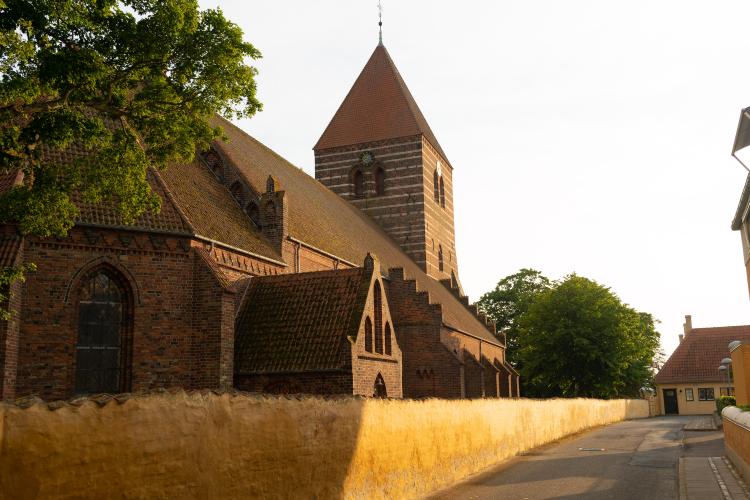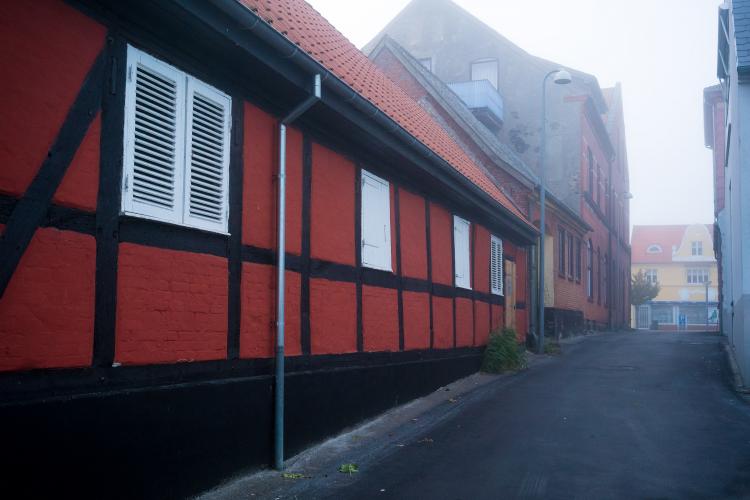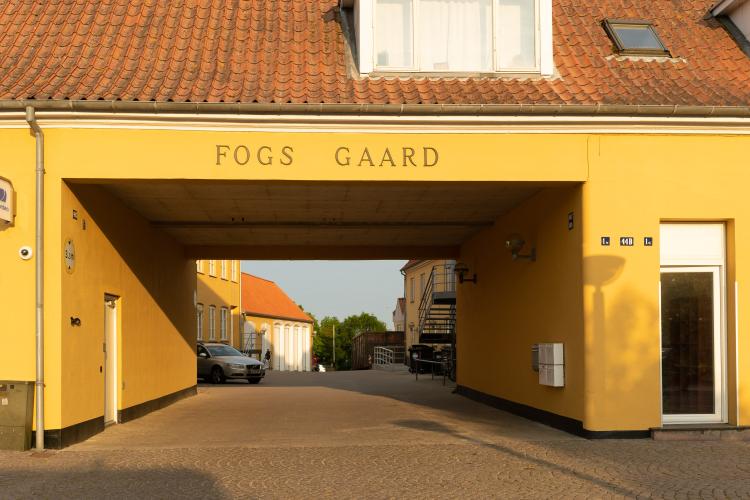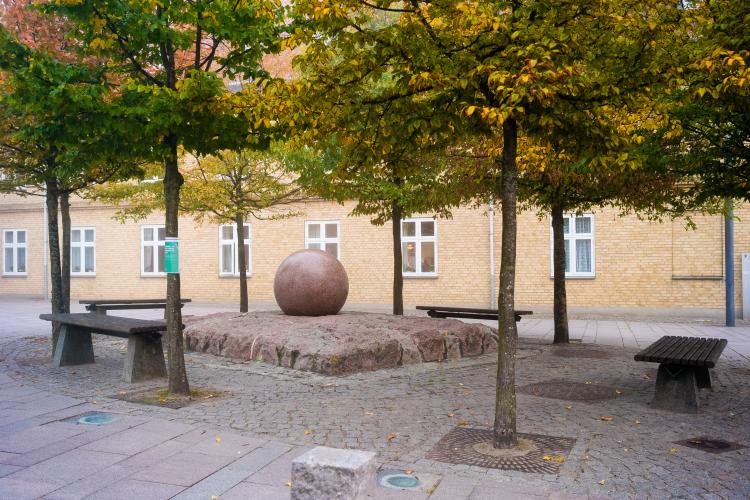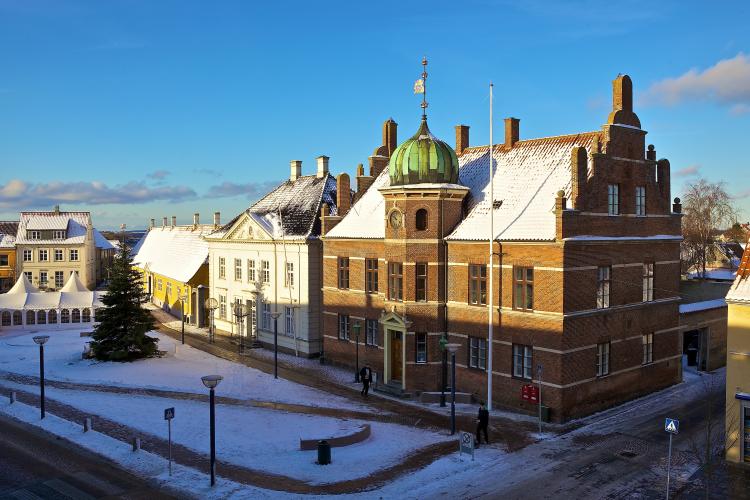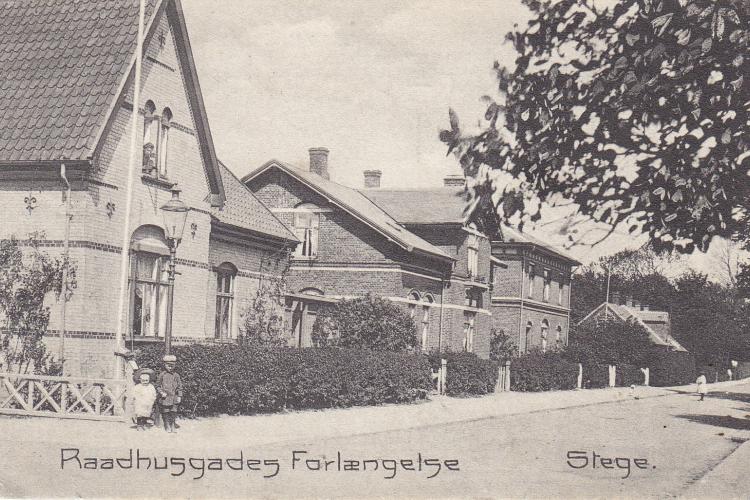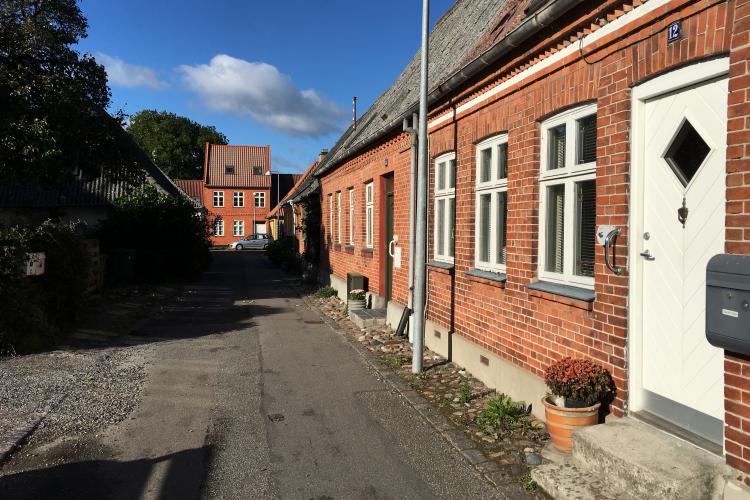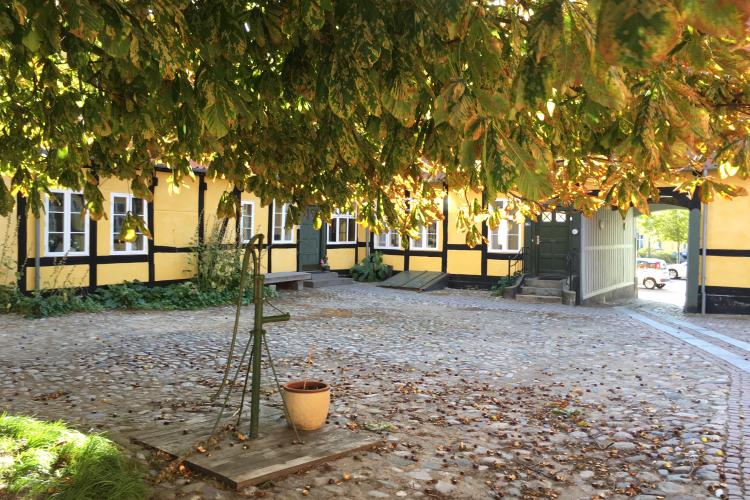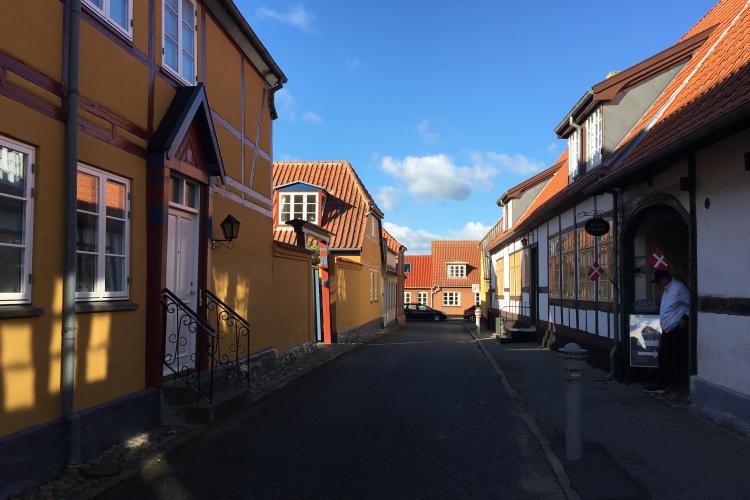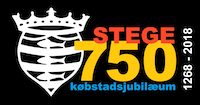Herring 25
Torvestræde – i.e the street at the square - has existed all the way back to Stege’s earliest times as a connection between the square and the church. At the end of the street lies Morten
Reenbergs house, Stege’s old rectory and pastoral building. It now functions as a parish community centre and church office and was thoroughly renovated in 2014. The wing towards Langgade, which had been
a ruin for years, was furnished with 3 smaller but very nice refuge and pilgrimage apartments. These are also available to rent for general use to people who want to visit Stege.

